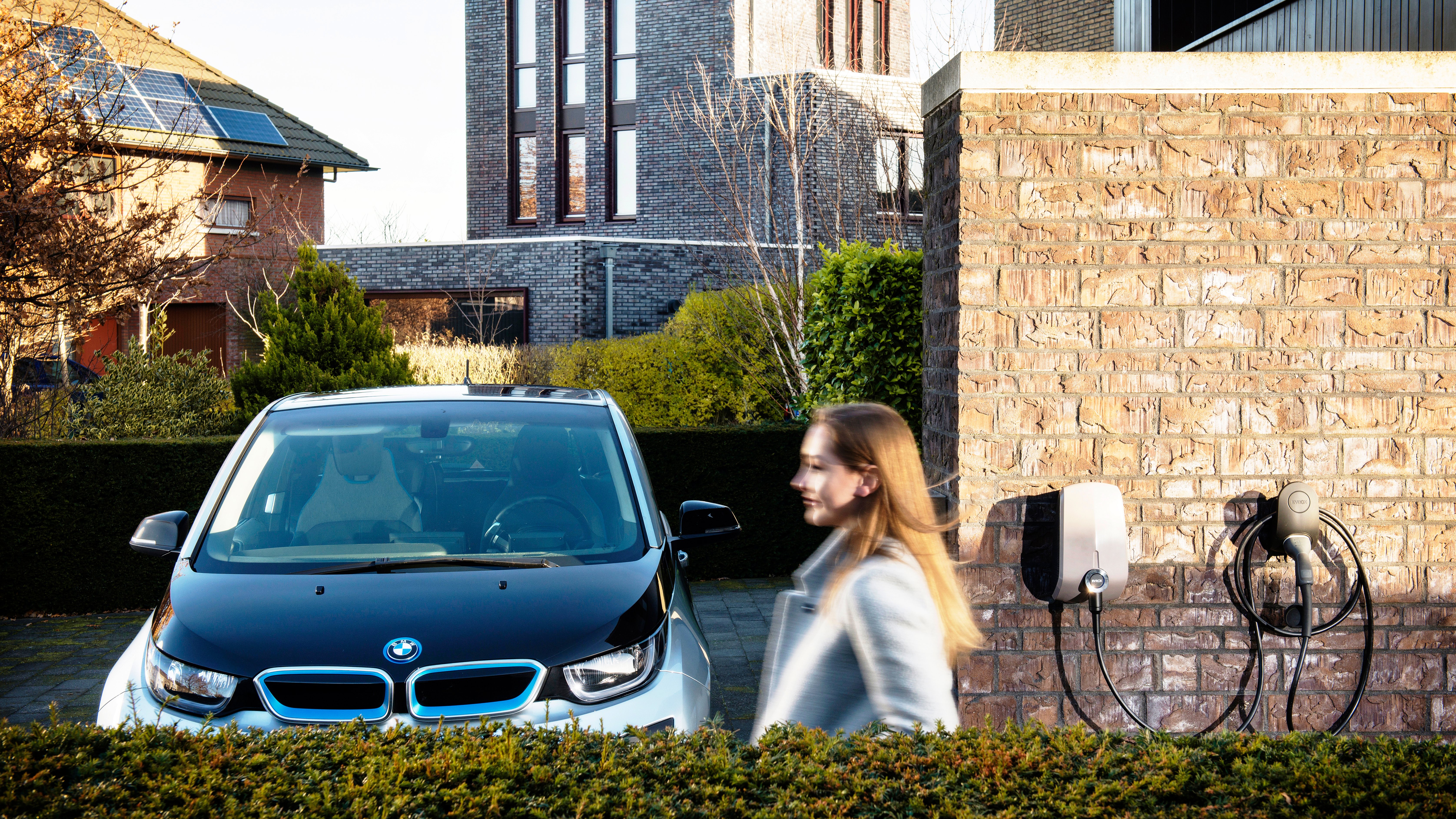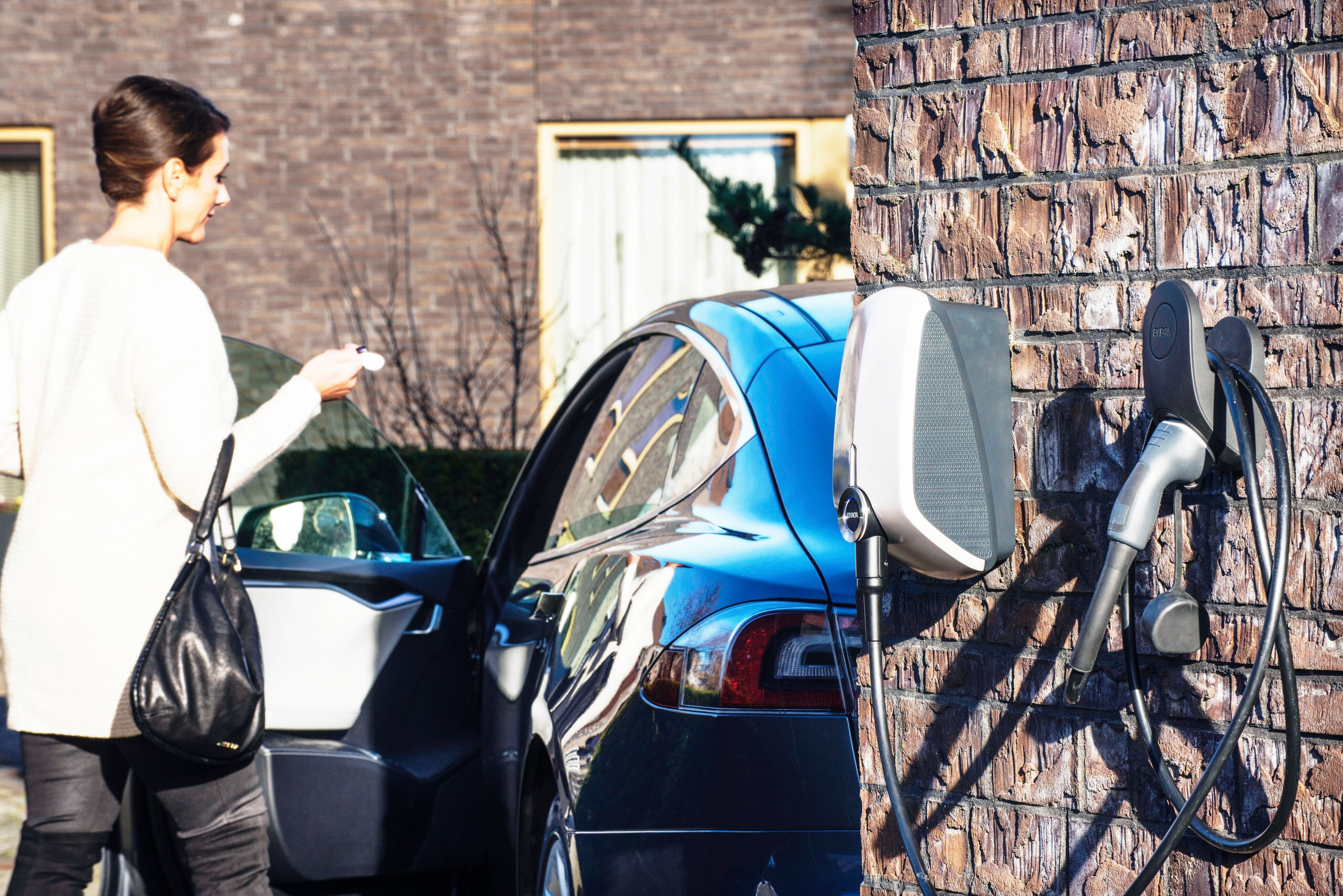/Home/9833EV%20Box-web.jpg?width=1600&name=9833EV%20Box-web.jpg)
Many electric vehicle (EV) drivers charge their EV at home, and while home charging is undoubtedly convenient, if carried out incorrectly, it can be hazardous. In fact, in the UK, 74 percent of EV drivers admit to charging dangerously due to the absence of local public charging points.
So what exactly constitutes dangerous charging? And how can you charge your electric vehicle safely? Read on to find out everything there is to know about safely charging your EV at home.
.jpg?width=4537&name=closeup-hand-grip-plug-connected-with-socket-charge-white-electric-car-rechargeable-battery%20(1).jpg)
Charging at home incorrectly can be dangerous
There are many ways to charge your electric vehicle at home safely, however, without taking the proper precautions it can be dangerous. To understand where the danger lies, it is firstly important to understand the different Levels of EV charging.
- Level 3 charging is the fastest type of EV charging that exists, charging some EVs in just 15 minutes. However, because of the high power output required, you won’t find these chargers in residential locations. They are much better suited for on-the-go locations such as service stations or fleet depots.
- Level 2 charging is the most common type of charging station. Given their relatively fast charging speeds, and the lower power output required, you’ll typically find Level 2 chargers at commercial or residential locations.
- Level 1 charging is the slowest charging Level, but it’s also the most accessible. It works by plugging the cable that came with your EV into a regular wall socket. This is, however, where the potential dangers start.
Many electric vehicle drivers charge their EV (or plug-in hybrid) with extension cords that just are not suitable for EV charging. According to a survey conducted among 1,500 EV and plug-in hybrid vehicle (PHEV) owners in the UK, nearly three out of four charge their vehicle using an extension lead. Some owners even connect several extension leads together to cover long distances. Others use indoor extension leads outdoors…
So, it is not hard to see how these charging methods could be dangerous, and while it may be tempting to cut corners with EV charging, is it really worth trading your safety for convenience? The answer to that question is always ‘no’. So let's take a closer look into each charging method and help you identify the safest option to charge your EV moving forward.

Is a charging station essential to charge your electric car?
Not necessarily, as every electric car typically comes with a charging cable that enables you to charge your EV via a domestic socket. Thanks to strict automotive safety standards, these cables are normally fitted with protections to prevent overcurrents. However, charging your EV using a domestic socket can still be dangerous.
Sure, the standard protections are good news for your car and whoever is handling the cable. But, they are not always enough to protect your home’s power outlet from overheating. This is especially true for houses with older electrical installations.
What’s more, charging your EV on a domestic socket takes a long time. Standard household outlets can deliver up to 2.3 kW (10 A). To put that into perspective, this means it would take over 25 hours to charge a 50 kW Peugeot e-208 to only 80 percent.
Therefore, we only recommend using a household outlet to charge your EV if it’s the only option. It is not a sustainable solution for recharging on a regular basis.
Is it safe to use an extension lead to charge your electric car?
If charging an EV with a domestic socket is dangerous, then it goes without saying that including an extension lead—or several—into the mix makes things even riskier.
EV charging requires far more power than your other standard household appliances, and the most domestic extension leads are simply not designed to transfer that much power. Not only are they more likely to give you an electric shock, but they can also increase the risk of electrical fires. Therefore, we never recommend using an extension lead to charge your EV.
Charging your EV with a reinforced socket
If you’re seeking a safer charging option to using a standard domestic socket, then using a reinforced CEE17 type socket is just that. These heavy-duty outlets are designed to deliver 3.2 kW at 14 A for several hours at a time, daily. However, it is important to note that you must first fit your outlet with a suitable circuit breaker.
While installing a reinforced outlet is cheaper than purchasing a charging station, it still may not be the most sustainable investment in the long term. Charging with a reinforced socket takes a long time—only slightly less time than on a standard outlet—so if you need to drive often, this could potentially pose some issues.
/Home/9871EV-Box_web.jpg?width=1920&name=9871EV-Box_web.jpg)
The safety of a certified charging station
Charging stations are purpose-built to help you get the most out of charging your electric vehicle. This means they are safer, faster, and more robust than any other non-certified charging method.
Thanks to the integrated safety features of charging stations, the risk of fires and electric shock is dramatically reduced. For example, if an electrical fault occurs, your charging station will stop the power transfer immediately and de-energise the cable. Not only does this protect your safety, but also saves your EV, home and grid connection from unnecessary strain.
Next to a safe charging experience, charging stations also power your vehicle much faster than if you were to use a domestic socket. Using a 11 kW home charging station, for example, would only take five hours and 15 minutes to charge a 50 kW Peugeot e-208. That’s five times faster than the home outlet.
What’s more, charging stations often come with a range of smart functionalities to help you balance your energy use. They are designed to withstand extreme weather conditions, so you never have to worry about running electricity cables in the rain. Using a certified charging station is always the safest option.
Take electrical safety seriously when it comes to EV charging
While charging your EV with an extension lead may seem like the cheaper, more convenient option, the dangers of electricity should not be underestimated. Luckily, there are many safer alternatives.
If you’re charging an EV, it’s always a good idea to use a certified charging station installed by a professional. This is also the case for when you’re charging your EV at home. Next to convenience and a range of smart functionalities, home charging stations are designed to offer the safest charging experience for you and your vehicle.
